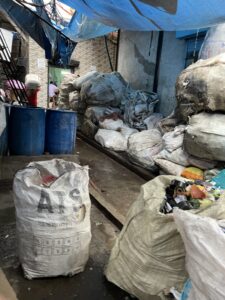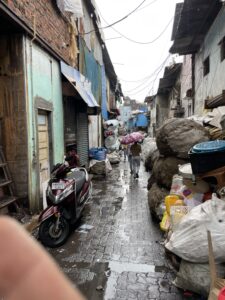As a kid growing up in the 1960’s, we really didn’t learn much about India. Of course, we heard about monsoons, the Taj Mahal, the Himalayas and Mahatma Gandhi. What was emphasized, though, was the poverty, the slums, and the caste system there. And so, when my wife and I decided to travel there, knowing that we couldn’t see everything in just one visit, we wanted to make sure to see the Taj Mahal and also to see the slums firsthand for ourselves. I was curious to see if they were really as bad as I had heard; and were they really like what was depicted in “Slum Dog Millionaire?”
So, in all honesty, I have to admit that Mumbai’s largest slum (Dharavi), on the surface at least and to the naked eye, is as bad as I learned in grade school and more recently as depicted in the movie. Our guided tour through the area lasted 3 hours and all throughout the entire time (we went there at the start of the monsoon season where our umbrellas were far too wide to be used in most of the alleyways and streets), I had never experienced a more captivating, disturbing, intriguing and fascinating travel adventure—ever!! Not only was I amazed at the ingenuity of turning garbage and refuse into salable product, but seeing the garment sweatshops, the pottery kilns, and the numerous other businesses throughout the area made me wonder why, on earth, we ever looked at this area so negatively. True, we’d call it a slum (and yes, we saw numerous rats, open sewers, and awful smells and at times horrible chaos), but it really is an archaically and haphazardly organized business district—with about 500 industrial units producing garments ,pottery, leather, steel, and services such as recycling and cleaning. About 15000 single room factories exist in the slum with an annual economy of $650,000,000!!!
What an incredible uplifting experience to see how well over a million people can live and work in what Westerners would consider squalor. As opposed to seeing this area revulsion (as many of us from the US would), I, for one, see it as a testament to the human spirit.




